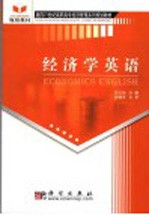
- 作 者:任志纯主编
- 出 版 社:北京:科学出版社
- 出版年份:2004
- ISBN:7030141083
- 标注页数:259 页
- PDF页数:271 页
请阅读订购服务说明与试读!
订购服务说明
1、本站所有的书默认都是PDF格式,该格式图书只能阅读和打印,不能再次编辑。
2、除分上下册或者多册的情况下,一般PDF页数一定要大于标注页数才建议下单购买。【本资源271 ≥259页】
图书下载及付费说明
1、所有的电子图书为PDF格式,支持电脑、手机、平板等各类电子设备阅读;可以任意拷贝文件到不同的阅读设备里进行阅读。
2、电子图书在提交订单后一般半小时内处理完成,最晚48小时内处理完成。(非工作日购买会延迟)
3、所有的电子图书都是原书直接扫描方式制作而成。
目录 1
Chapter 1 Ten Principles of Economics 1
Principle 1 People face tradeoffs 3
Principle 2 The cost ofsomething is what you give to get it 6
Principle 3 Rational people think at the margin 7
Principle 4 People respond to incentives 9
Principle 5 Trade can make everyone better off 12
Principle 6 Markets are usually a good way to organize economic activity 13
Principle 7 Governments can sometimes improve market outcomes 15
Principle 8 A country's standard of living depends on its ability to produce goods and services 18
Principle 9 Prices rise when the government prints too much money 20
Principle 10 Society faces a short-run tradeoff between inflation and unemployment22 Questions for review 23
Chapter 2 Interpendence and the Gains from Trade 24
A parable for the modern economy 25
The need and motivation for international trade 32
Absolute advantage and comparative advantage 35
Applications of comparative advantage 37
The legacy ofadam smith and david ricardo 39
Questions for review 41
Chapter 3 The Market Forces of Supply and Demand 42
The determinants of individual demand 44
The demand schedule and the demand curve 46
Market demand versus individual demand 48
Shifts in the demand curve 49
The determinants of individual supply 52
The supply schedule and the supply curve 53
Market supply versus individual supply 54
Shifts in the supply curve 56
Equilibrium 57
The determinants of the deadweight loss 1 58
Three steps to analyzing changes in equilibrium 60
Conclusion:How price allocate resources 63
Deadweight loss and tax revenue as taxes vary 1 63
Question for review 65
The elasticity of demand 66
Chapter 4 Elasticity and Its Application 66
The elasticity of supply 74
Applications of supply,demand,and elasticiy 77
Questions for review 84
Chapter 5 Supply,Demand,and Government Policies 85
Controls on prices 86
Taxes 97
Conclusion 106
Questions for review 106
Chapter 6 Production Costs 107
The production function 109
Variable costs versus fixed costs 110
Production decisions in the short run and long run 112
Diminishing returns in production 114
Maximizing profit and the production decision 116
Economies and diseconomies of scale 119
The experience curve 127
Optimal scale and X-inefficiency 129
Conclusion 131
Chapter 7 Consumers,Producers,and the Efficiency of Markets 133
Consumer surplus 134
Producer surplus 141
Market efficiency 145
Conclusion 149
Questions for review 151
Chapter 8 The Costs of Taxation 152
The deadweight loss of taxation 153
Questions for review 168
Conclusion 168
Chapter 9 Public Goods and Common Resources 169
The different kinds of goods 169
Public goods 171
Common Resources 179
Questions for review 185
Chapter 10 Measuring a Nation's Income 186
The economy's income and expenditure 187
The measurement ofgross domestic product 189
The components of GDP 193
Real versus nominal GDP 195
GDP and economic well-being 199
Conclusion 203
Questions for review 203
Chapter 11 Aggregate Demand and Aggregate Supply 205
Three key facts about economic fluctuations 206
Explaining short-run economic fluctuations 208
The aggregate-demand curve 211
The aggregate-supply curve 216
Two causes of recession 223
Conclusion:The orgins of aggregate demand and aggregate supply 230
Questions for review 231
The essence of fiscal policy 232
Chapter 12 Management ofthe Economy Ⅰ:Fiscal Policy 232
Problems with fine-tuning aggregate demand 234
Government borrowing 237
Conclusion 241
Chapter 13 Management of the Economy Ⅱ:Monetary Policy 243
The essence of monetary policy 243
Principles of monetarism 245
Measuring the money supply 248
The effects of monetary policy on business 255
Conclusion 257
主要参考文献 259
